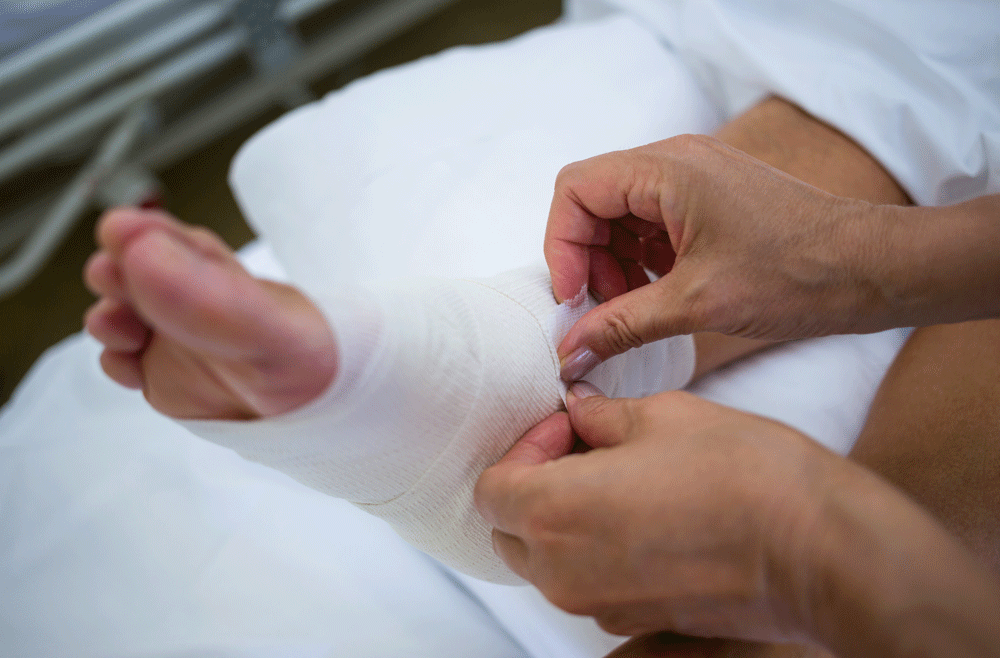Image Source: Google
An ankle sprain is a common injury that occurs when the ligaments in the ankle are stretched or torn. This can happen during physical activities, sports, or even just by walking on an uneven surface.
Understanding how ankle sprains occur and knowing the effective treatment options for ligament tears can help individuals recover faster and prevent long-term complications. If you are looking for the right specialists for ankle sprain ligament tear treatment then, you may contact Meleca Foot & Ankle.
Causes of Ankle Sprains
Ankle sprains can happen to anyone, regardless of age or fitness level. The most common causes of ankle sprains include:
- Twisting or rolling the ankle
- Falling or landing awkwardly on the foot
- Sports-related injuries, especially in activities that involve sudden changes in direction or jumping
- Walking or running on uneven surfaces
Symptoms of Ankle Sprains
Recognizing the symptoms of an ankle sprain is essential for determining the severity of the injury and seeking appropriate treatment. Common symptoms of ankle sprains include:
- Pain and tenderness around the ankle
- Swelling and bruising
- Difficulty bearing weight on the affected ankle
- Instability or a feeling of weakness in the ankle
Treatment Options for Ankle Sprains
When it comes to treating ankle sprains, there are several effective options that can help individuals recover and prevent further complications. Some of the most common treatment methods for ligament tears in the ankle include:
RICE Method
The RICE method is a simple and effective way to manage the symptoms of an ankle sprain and promote healing. RICE stands for:
- Rest: Avoid putting weight on the affected ankle and give it time to heal.
- Ice: Apply ice packs to reduce swelling and pain in the ankle.
- Compression: Use bandages or wraps to support the ankle and reduce swelling.
- Elevation: Elevate the ankle above heart level to reduce swelling and promote blood flow.
Physical Therapy
Physical therapy is an essential part of rehabilitation for ankle sprains. A physical therapist can create a customized exercise program to help strengthen the muscles around the ankle, improve range of motion, and enhance balance and stability.
Bracing or Splinting
Wearing a brace or splint can provide support and stability to the ankle during the healing process. This can help prevent further injury and speed up the recovery time.
Medication
Over-the-counter pain relievers such as ibuprofen or acetaminophen can help manage pain and reduce inflammation in the ankle. In some cases, a healthcare provider may prescribe stronger medications to alleviate discomfort.
Surgery
In severe cases where the ligaments in the ankle are severely torn or damaged, surgery may be necessary to repair the injury. Surgery can help restore stability to the ankle and reduce the risk of recurrent sprains.
Preventing Ankle Sprains
While ankle sprains cannot always be prevented, there are several strategies that individuals can follow to reduce the risk of injury:
- Wearing supportive footwear that fits properly
- Using orthotic inserts or braces for added support
- Performing regular ankle-strengthening exercises
- Avoiding high-risk activities or sports without proper training
- Ensuring the environment is free of hazards that can cause falls or twists
When to Seek Medical Attention
It is essential to seek medical attention if you suspect you have an ankle sprain, especially if:
- The pain and swelling do not improve with rest and self-care
- You are unable to bear weight on the affected ankle
- The ankle appears deformed or misaligned
- You have recurrent ankle sprains or instability
By understanding the causes, symptoms, and treatment options for ankle sprains, individuals can take proactive steps to recover from ligament tears effectively and reduce the risk of future injuries.
